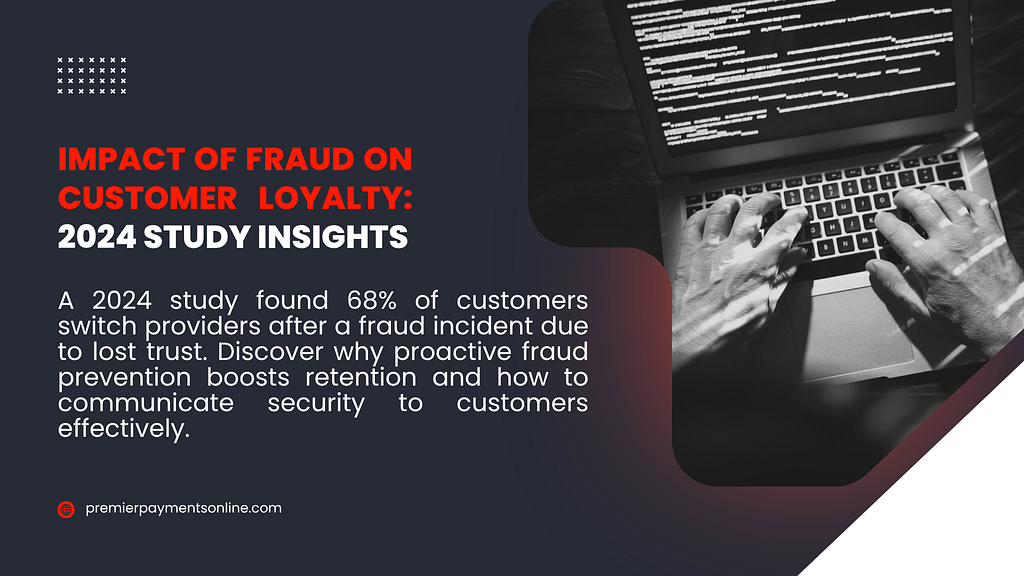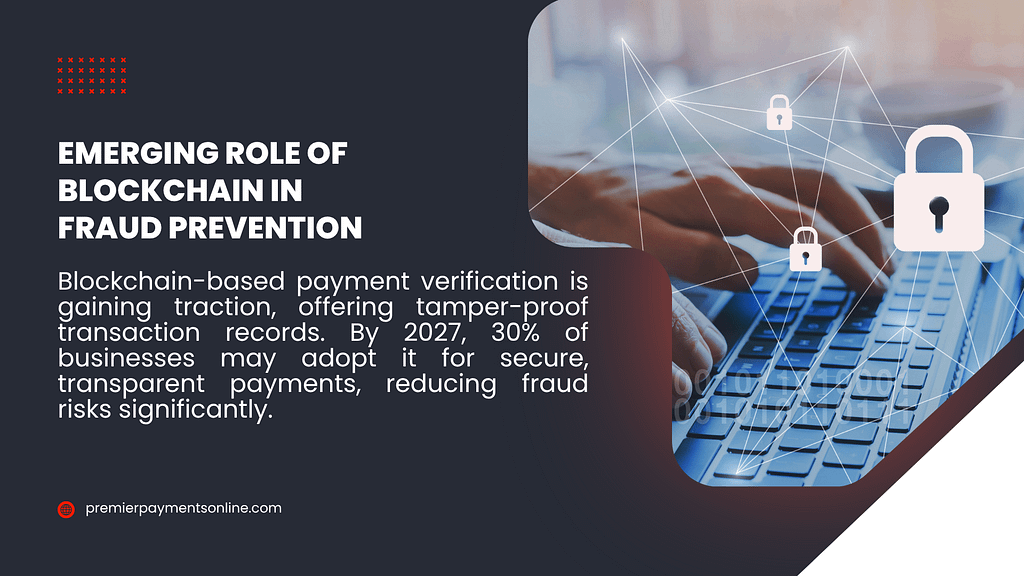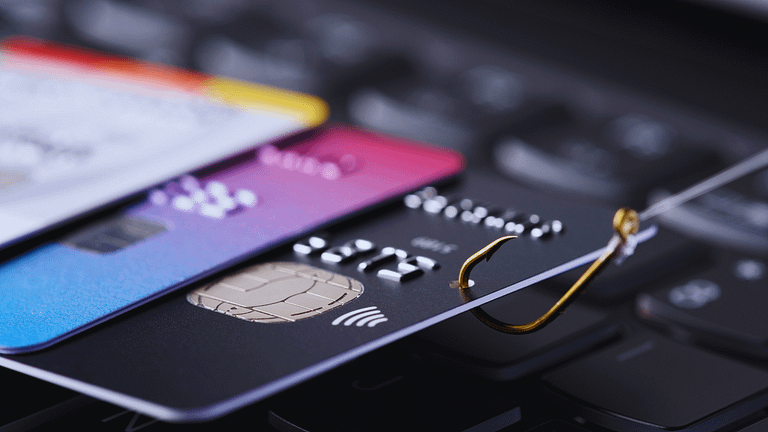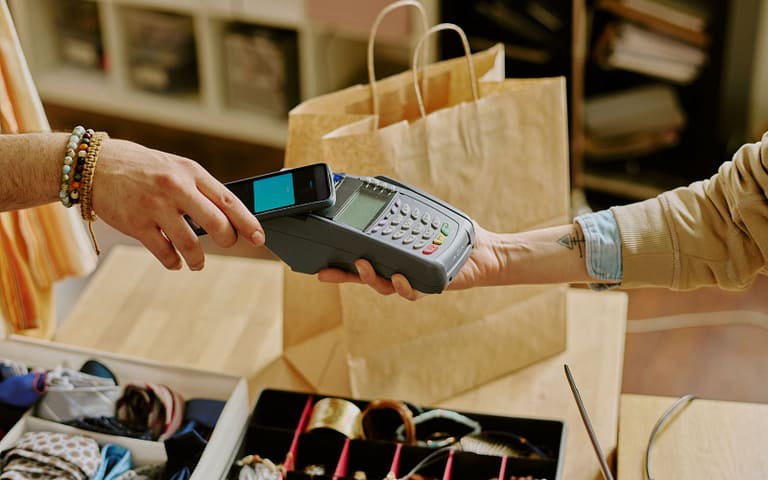What You’ll Learn Today
This guide breaks down payment fraud prevention into actionable steps. We cover the real costs of fraud, practical prevention methods, and technologies that actually work. You’ll discover which security measures matter most for your business size and industry. We also explore new digital ID systems coming in 2025-2026 and how they’ll change fraud prevention forever.
The Brutal Reality of Payment Fraud

Payment fraud hit businesses hard in 2024. The numbers don’t lie – fraud losses jumped 18% from the previous year. But here’s what most articles won’t tell you: the real cost goes way beyond the stolen money.
| Hidden Costs of Fraud | Average Impact per Incident |
| Chargeback fees | $25-$100 per transaction |
| Investigation time | 15-40 hours staff time |
| Lost customer trust | 23% customer churn rate |
| Regulatory fines | $5,000-$500,000 |
| Reputation damage | Immeasurable |
Small businesses get hit the hardest. They lack the resources to fight back, and fraudsters know it. A single major fraud incident can destroy years of hard work.
The fraud landscape changed completely in 2024. Old-school credit card skimming is almost dead. Today’s criminals use AI to create fake identities, steal login credentials, and bypass security systems. They’ve gone digital, and they’re really good at it.
Payment Fraud Prevention: The Basics That Actually Work
Most business owners overcomplicate fraud prevention. They think they need expensive systems and complex procedures. Wrong. The best defense starts with simple, effective measures.
Real-Time Transaction Monitoring
This technology watches every transaction as it happens. When something looks suspicious – wrong location, unusual amount, weird timing – it flags the transaction immediately. The system learns your customers’ patterns and spots anomalies.
| Monitoring Trigger | Risk Level | Action Taken |
| New device login | Medium | SMS verification |
| Location change >500 miles | High | Phone call verification |
| Purchase >3x average | High | Manual review |
| Multiple failed attempts | Critical | Account lockout |
Multi-Factor Authentication (MFA)
MFA adds extra steps to verify who’s really making the purchase. It’s annoying for customers, but it works. Even if fraudsters steal passwords, they can’t get past MFA without the second factor.
The key is making MFA convenient. Biometric authentication (fingerprints, face recognition) provides strong security without frustrating legitimate customers.
Advanced Technologies That Make a Difference
Machine learning sounds fancy, but it’s really just pattern recognition on steroids. These systems analyze thousands of data points per transaction – location, device, time, purchase history, typing patterns, even how someone moves their mouse.
| Traditional Fraud Detection | AI-Powered Detection |
| Rule-based alerts | Behavioral pattern analysis |
| Manual review required | Automated risk scoring |
| High false positive rate | Learns from mistakes |
| Reactive approach | Predictive capabilities |
Device Fingerprinting
Every device has a unique “fingerprint” – screen resolution, installed fonts, browser settings, hardware specs. This creates an invisible ID that’s nearly impossible to fake. When fraudsters try to access accounts from new devices, the system knows immediately.
Behavioral Analytics
This technology tracks how people interact with websites and apps. Legitimate users have consistent patterns – how they scroll, click, type, and navigate. Fraudsters behave differently, and the system detects these subtle differences.
Compliance: More Than Just Checking Boxes
PCI DSS compliance isn’t optional – it’s the foundation of payment fraud prevention. But compliance alone won’t stop determined fraudsters. Think of it as your baseline security, not your complete defense.
| PCI DSS Level | Annual Transaction Volume | Validation Requirements |
| Level 1 | 6M+ or major breach | Annual on-site audit |
| Level 2 | 1M-6M transactions | Annual self-assessment |
| Level 3 | 20K-1M e-commerce | Annual self-assessment |
| Level 4 | Under 20K e-commerce | Annual self-assessment |
The PCI compliance test reveals gaps in your current security. Most businesses fail their first assessment. The benefits of PCI DSS compliance extend beyond avoiding penalties – it builds customer trust and reduces liability.
Non-compliance costs add up fast. The PCI DSS non-compliance charge structure varies by processor, but monthly fees can reach $500 or more. For high-volume merchants, these penalties become massive.
Industry-Specific Fraud Prevention Strategies
Different industries face different fraud risks. Cookie-cutter solutions don’t work. You need strategies tailored to your specific business model and customer base.
| Industry | Primary Fraud Types | Key Prevention Measures |
| E-commerce | Card testing, friendly fraud | Address verification, velocity checking |
| Restaurants | Skimming, employee fraud | EMV terminals, POS monitoring |
| Healthcare | Identity theft, billing fraud | Patient verification, audit trails |
| SaaS | Account takeover, trial abuse | MFA, usage monitoring |
| Non-profits | Donation fraud, grant abuse | Donor verification, financial controls |
E-commerce Payment Fraud Prevention
Online merchants face unique challenges. Customers aren’t physically present, making identity verification difficult. Payment fraud detection systems for e-commerce must balance security with user experience.
High-Risk Industries
Some businesses face higher fraud rates due to their industry classification. Adult entertainment, gambling, travel, and CBD companies need specialized protection. These industries often require high-risk merchant accounts with enhanced fraud prevention capabilities.
The Cost-Benefit Analysis That Matters
Many business owners resist investing in payment fraud prevention because they don’t understand the real costs of doing nothing. Here’s the math that matters:
| Security Investment | Monthly Cost | Fraud Prevention Value |
| Basic monitoring | $50-200 | Prevents $5,000-15,000 losses |
| Advanced AI system | $300-800 | Prevents $20,000-50,000 losses |
| Enterprise solution | $1,000-5,000 | Prevents $100,000+ losses |
The ROI calculation is simple: if your fraud prevention system costs $500 monthly but prevents $10,000 in fraud losses, you’re ahead by $9,500 every month.
Digital Identity: The Game Changer Coming Soon

Global digital identity standards will revolutionize payment fraud prevention. By 2026, most developed countries will have standardized digital ID systems. These systems will provide bulletproof identity verification across borders and platforms.
| Current Identity Verification | Future Digital ID Systems |
| Multiple documents required | Single digital credential |
| Manual verification process | Instant automated verification |
| Limited cross-border use | Global Recognition |
| High fraud vulnerability | Cryptographically secure |
| Inconsistent standards | Unified global protocols |
Digital IDs will eliminate many current fraud vectors. Synthetic identity fraud – where criminals create fake identities from real data – becomes nearly impossible when everyone has a cryptographically secured digital identity.
Practical Implementation Roadmap
Rolling out payment fraud prevention shouldn’t be overwhelming. Follow this step-by-step approach:
Phase 1: Foundation (Weeks 1-2)
- Complete PCI DSS assessment
- Implement basic MFA
- Set up transaction monitoring alerts
Phase 2: Enhancement (Weeks 3-4)
- Add device fingerprinting
- Configure behavioral analytics
- Train staff on fraud indicators
Phase 3: Optimization (Weeks 5-8)
- Fine-tune alert thresholds
- Implement advanced AI tools
- Develop incident response procedures
| Implementation Phase | Key Metrics to Track |
| Foundation | Compliance score, basic alert volume |
| Enhancement | False positive rate, detection accuracy |
| Optimization | Customer satisfaction, fraud loss reduction |
Staff Training That Actually Works
Your employees are your first line of defense. But generic training programs don’t work. Staff need practical, role-specific education about fraud prevention.
Customer Service Training
- Recognize social engineering attempts
- Verify customer identity properly
- Handle suspicious requests appropriately
Management Training
- Understand fraud cost calculations
- Implement effective policies
- Respond to security incidents
Technical Staff Training
- Configure security systems correctly
- Monitor system performance
- Investigate suspicious activities
The Future of Payment Fraud Prevention

Several trends will reshape fraud prevention over the next 3-5 years:
Quantum Computing Impact Current encryption methods will become vulnerable to quantum attacks. The payment industry is already developing quantum-resistant security protocols. Businesses need to prepare for this transition.
AI Arms Race Fraudsters use AI to create more convincing attacks. Defense systems respond with more sophisticated detection algorithms. This cycle will continue accelerating.
Biometric Standardization Biometric authentication will become as common as passwords. Industry standards are emerging for fingerprint, face, and voice recognition across different platforms.
| Technology Trend | Timeline | Business Impact |
| Quantum-resistant encryption | 2026-2028 | Major system upgrades required |
| Universal biometric standards | 2025-2027 | Simplified customer authentication |
| AI-powered fraud detection | 2024-2026 | Dramatically improved accuracy |
| Blockchain identity verification | 2027-2030 | Immutable identity records |
Choosing the Right Payment Fraud Prevention Partner
Not all fraud prevention providers are equal. Here’s what to look for:
Technical Capabilities
- Real-time processing capacity
- Machine learning sophistication
- Integration flexibility
- Scalability options
Industry Experience
- Track record in your sector
- Regulatory compliance expertise
- Customer references
- Incident response capabilities
Support Quality
- 24/7 monitoring availability
- Response time guarantees
- Training and onboarding support
- Ongoing optimization assistance
Premier Payments Online’s risk fraud management services combine advanced technology with industry expertise. Our team has over 15 years of experience protecting businesses from payment fraud.
Measuring Success: KPIs That Matter
Track these metrics to measure your payment fraud prevention effectiveness:
| Primary KPIs | Target Range | Measurement Frequency |
| Fraud detection rate | 85-95% | Weekly |
| False positive rate | 2-5% | Daily |
| Customer satisfaction | 90%+ | Monthly |
| Financial loss reduction | 80%+ vs. baseline | Monthly |
Secondary Metrics
- Investigation time per incident
- Staff productivity impact
- Customer complaint volume
- Regulatory compliance score
Regional Considerations and Global Expansion
Payment fraud prevention requirements vary significantly by region. If you’re expanding globally, you need to understand local regulations and fraud patterns.
| Region | Key Regulations | Common Fraud Types |
| North America | PCI DSS, SOX, CCPA | Account takeover, friendly fraud |
| Europe | GDPR, PSD2, SCA | Card skimming, IBAN fraud |
| Asia-Pacific | Local banking laws | Mobile payment fraud, identity theft |
| Latin America | Data protection laws | ATM skimming, social engineering |
Technology Integration Challenges
Implementing payment fraud prevention systems often requires significant integration work. Legacy systems may not support modern security protocols. Plan for these technical challenges:
Common Integration Issues
- API compatibility problems
- Database synchronization delays
- User interface inconsistencies
- Performance impact on existing systems
Solution Strategies
- Phased rollout approach
- Extensive testing protocols
- Backup system maintenance
- Staff training on new workflows
The Role of ACH Payment Security
ACH transactions require different fraud prevention approaches than credit card payments. The longer settlement times create unique vulnerabilities. Intelligent payment routing can help direct ACH payments through the most secure channels.
Key Takeaways for Business Owners
Payment fraud prevention isn’t optional anymore – it’s a business necessity. The criminals are getting smarter, the regulations are getting stricter, and the costs of doing nothing are too high to ignore.
Start with the basics: PCI compliance, real-time monitoring, and multi-factor authentication. These foundational elements will stop most fraud attempts without breaking your budget.
Invest in employee training. Your staff will encounter fraud attempts regularly, and they need to know how to respond appropriately. A well-trained team can prevent fraud that technology might miss.
Choose technology partners carefully. Look for providers with deep industry experience, strong technical capabilities, and excellent support. The cheapest option is rarely the best value.
Plan for the future. Digital identity systems, quantum computing, and AI advances will reshape payment fraud prevention. Stay informed about these trends and prepare for necessary upgrades.
Remember: the goal isn’t to eliminate all fraud (impossible) but to make your business a harder target than your competitors. Fraudsters usually choose the path of least resistance.
Ready to implement robust payment fraud prevention for your business? Premier Payments Online specializes in protecting businesses from evolving fraud threats while maintaining smooth customer experiences. Our team can assess your current vulnerabilities and design a comprehensive protection strategy tailored to your specific needs. Contact us today to schedule your free fraud risk assessment.
Frequently Asked Questions
What’s the difference between payment fraud prevention and fraud detection?
Payment fraud prevention focuses on stopping fraud before it happens through security measures like authentication, encryption, and access controls. Fraud detection identifies suspicious activities after they occur or in real-time. The best approach combines both – prevention reduces fraud attempts while detection catches what gets through your preventive measures.
How much should a small business spend on payment fraud prevention?
Small businesses should budget 1-3% of their annual payment processing volume for fraud prevention. For a business processing $500,000 annually, that’s $5,000-$15,000 per year. This investment typically prevents 10-20 times more in fraud losses, making it highly cost-effective.
Can payment fraud prevention systems block legitimate customers?
Yes, overly aggressive systems can create false positives that block legitimate transactions. Modern AI-powered systems reduce this problem by learning customer behavior patterns and applying risk-based authentication. The key is finding the right balance between security and customer experience.
How quickly can fraudsters adapt to new prevention measures?
Professional fraud rings typically adapt to new security measures within 3-6 months. This constant evolution makes it essential to use systems that continuously update their detection algorithms and stay ahead of emerging fraud techniques.
What happens if my business suffers a data breach despite fraud prevention measures?
Having payment fraud prevention systems in place significantly reduces liability and regulatory penalties following a breach. Insurance companies also offer better rates and coverage to businesses with documented security measures. The systems help contain damage and provide evidence for investigations.
Are biometric authentication methods reliable for payment fraud prevention?
Biometric authentication provides excellent security when implemented correctly. However, biometric data can’t be changed if compromised, unlike passwords. The best approach combines biometrics with other authentication factors for maximum security.
How do payment fraud prevention requirements differ for online vs. in-store transactions?
Online transactions face higher fraud risk due to card-not-present vulnerabilities. They require stronger identity verification, address verification, and behavioral analytics. In-store transactions benefit from EMV chip technology and physical card presence but still need protection against skimming and employee fraud.
What role does customer education play in payment fraud prevention?
Customer education is crucial – informed customers are less likely to fall for phishing attempts, use weak passwords, or share sensitive information. Educated customers also report suspicious activities faster, helping businesses respond to threats more quickly.
How will digital identity standards change payment fraud prevention?
Digital identity standards will provide cryptographically secure, government-backed identity verification that’s nearly impossible to fake. This will eliminate synthetic identity fraud and make account takeover much more difficult. Implementation begins in 2025-2026 in most developed countries.
Can small businesses access the same fraud prevention technology as large corporations?
Yes, cloud-based fraud prevention services now offer enterprise-level protection at affordable prices for small businesses. These services provide advanced AI, machine learning, and real-time monitoring without requiring significant upfront investment in technology infrastructure.
How often should businesses update their payment fraud prevention systems?
Security systems should receive updates at least monthly, with critical patches applied immediately. Full system reviews should happen quarterly, and major upgrades should be considered annually. The threat landscape evolves rapidly, requiring constant vigilance and adaptation.
What’s the biggest mistake businesses make with payment fraud prevention?
The biggest mistake is treating fraud prevention as a one-time implementation rather than an ongoing process. Fraudsters constantly evolve their tactics, so businesses must continuously monitor, adjust, and improve their security measures to stay protected.











